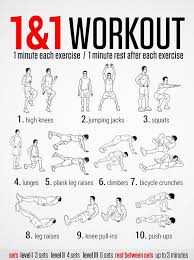Core Training: Strengthening the Foundation of Your Body
When it comes to fitness and exercise, one area that often gets overlooked is core training. The core, which includes muscles in the abdomen, lower back, hips, and pelvis, is often referred to as the body’s powerhouse. It serves as a stable foundation for all movement and plays a crucial role in maintaining balance, stability, and overall strength.
Core training goes beyond just achieving a six-pack or toned abs. It involves strengthening the deep muscles that support the spine and pelvis, improving posture, and enhancing overall functional fitness. Whether you’re an athlete looking to enhance performance or someone seeking better everyday movement and injury prevention, core training should be an essential part of your workout routine.
One of the key benefits of core training is improved stability. A strong core helps maintain proper alignment of the spine during various movements such as lifting weights, running, or even simple tasks like bending over to pick something up. By stabilizing the spine, core muscles help distribute forces evenly throughout the body, reducing the risk of injuries to other areas such as the shoulders or knees.
Another advantage of core training is enhanced balance and coordination. Many activities require a combination of strength and stability while maintaining balance. By strengthening your core muscles, you improve your ability to control your body’s movements and maintain balance in various positions or during dynamic activities like sports or dancing.
In addition to stability and balance, core training can also contribute to improved posture. With today’s sedentary lifestyle and long hours spent sitting at desks or hunched over electronic devices, poor posture has become increasingly common. Weak abdominal muscles can lead to an anterior pelvic tilt (where the lower back arches excessively), causing strain on the lower back. By strengthening these muscles through targeted exercises like planks or bridges, you can help correct postural imbalances and alleviate associated discomfort.
So how can you incorporate effective core training into your fitness routine? It’s important to note that core exercises should involve more than just traditional crunches. While crunches can target the superficial abdominal muscles, it’s crucial to engage the deeper core muscles as well. Exercises like planks, side planks, bird dogs, Russian twists, and stability ball exercises are great options to target the entire core.
Remember to start with proper form and gradually increase the difficulty or intensity of the exercises as your core strength improves. Consistency is key, so aim for at least two to three core training sessions per week. Additionally, consider incorporating other forms of exercise such as Pilates or yoga that emphasize core engagement and stability.
In conclusion, core training is not just about achieving a toned midsection; it’s about building a strong foundation for your body. By strengthening your core muscles, you can improve stability, balance, posture, and overall functional fitness. So whether you’re an athlete or simply looking to enhance your everyday movements and prevent injuries, make sure to prioritize core training in your fitness routine. Your body will thank you for it!
Frequently Asked Questions About Core Training: Exercise Examples, Workouts, Best Training Methods, and Frequency
- What is core exercise examples?
- What is core training workout?
- What is the best way to train your core?
- Is it OK to do core exercises every day?
What is core exercise examples?
Core exercises target the muscles in your abdomen, lower back, hips, and pelvis. Here are some examples of core exercises that you can incorporate into your workout routine:
- Plank: Start by getting into a push-up position with your forearms on the ground and elbows directly under your shoulders. Engage your core, squeeze your glutes, and hold this position for 30 seconds to a minute.
- Russian Twist: Sit on the floor with your knees bent and feet flat on the ground. Lean back slightly while keeping your back straight. Hold a weight or medicine ball in front of you and twist your torso from side to side, touching the weight to the ground on each side.
- Bicycle Crunches: Lie on your back with your hands behind your head and knees bent at a 90-degree angle. Lift your shoulder blades off the ground and bring one knee towards your chest while extending the other leg straight out. Twist your torso, bringing the opposite elbow towards the bent knee. Alternate sides in a cycling motion.
- Bridge: Lie on your back with knees bent and feet flat on the ground hip-width apart. Lift your hips off the ground until there is a straight line from knees to shoulders. Squeeze your glutes and engage your core as you hold this position for a few seconds before lowering back down.
- Side Plank: Lie on one side with legs extended and feet stacked on top of each other. Prop yourself up using one forearm, making sure it’s directly below your shoulder. Lift your hips off the ground so that only one forearm and foot are supporting you. Hold this position for 30 seconds to a minute before switching sides.
- Dead Bug: Lie flat on your back with arms extended towards the ceiling and legs raised with knees bent at 90 degrees. Lower one arm behind you while simultaneously extending the opposite leg until they are hovering just above the ground. Return to the starting position and repeat on the other side.
Remember to maintain proper form and engage your core throughout each exercise. Start with a number of repetitions and sets that challenge you without compromising your technique. As you get stronger, gradually increase the intensity or duration of each exercise.
What is core training workout?
A core training workout is a focused exercise routine that specifically targets the muscles in the core region of the body. The core includes muscles in the abdomen, lower back, hips, and pelvis. The purpose of a core training workout is to strengthen and stabilize these muscles, improving overall stability, balance, posture, and functional fitness.
A typical core training workout may include a combination of exercises that engage the deep core muscles as well as the superficial abdominal muscles. Here are some common exercises often included in a core training workout:
- Planks: This exercise involves holding a push-up position while engaging the core muscles to maintain stability. Variations include forearm planks, side planks, and plank with leg lifts.
- Bridges: Lie on your back with knees bent and feet flat on the floor. Lift your hips off the ground while engaging your glutes and core muscles. This exercise targets the lower back, glutes, and abdominal muscles.
- Russian Twists: Sit on the floor with knees bent and feet lifted off the ground. Twist your torso from side to side while holding a weight or medicine ball to engage the oblique muscles.
- Bicycle Crunches: Lie on your back with knees bent and hands behind your head. Bring opposite elbow to opposite knee while extending the other leg outwards in a cycling motion.
- Superman Pose: Lie face down on the floor with arms extended overhead and legs straight behind you. Lift your arms, chest, and legs off the ground simultaneously while engaging your back muscles.
- Bird Dogs: Start on all fours with hands directly under shoulders and knees under hips. Extend one arm forward while extending opposite leg backward without arching or rounding your back.
These are just a few examples of exercises commonly included in a core training workout routine. It’s important to note that proper form is crucial for effective engagement of the targeted muscles and to prevent injury. If you’re new to core training, it may be helpful to consult with a fitness professional or personal trainer who can guide you and ensure you’re performing the exercises correctly.
Remember, consistency is key when it comes to core training. Aim for at least two to three core workouts per week, and gradually increase the difficulty or intensity of the exercises as your core strength improves. With regular practice, you’ll notice improvements in stability, balance, posture, and overall functional fitness.
What is the best way to train your core?
When it comes to training your core, it’s important to incorporate a variety of exercises that target different muscles within the core. Here are some tips to help you effectively train your core:
- Engage in compound movements: Compound exercises that involve multiple muscle groups, such as squats, deadlifts, and overhead presses, can engage the core as a stabilizer. These exercises challenge the entire body while also activating the core muscles.
- Incorporate planks: Planks are an excellent exercise for strengthening the deep core muscles. Start with a basic forearm plank and gradually increase the duration as you build strength. You can also try variations like side planks or plank variations on an unstable surface like a stability ball.
- Include rotational movements: Adding rotational exercises to your routine can engage the obliques and improve core stability. Exercises like Russian twists or woodchoppers can be effective in targeting these muscles.
- Use stability balls or balance equipment: Performing exercises on unstable surfaces can further challenge your core stability and activate more muscle fibers. Incorporate exercises like stability ball rollouts or standing on one leg to improve balance and engage the core.
- Practice Pilates or yoga: Pilates and yoga are great disciplines that focus on core engagement and control. These workouts often involve slow, controlled movements that target deep core muscles while promoting flexibility and body awareness.
- Don’t forget about lower back strength: A balanced core training routine should include exercises that strengthen the lower back muscles as well. Back extensions or Superman exercises can help maintain muscular balance between the front and back of your torso.
- Maintain proper form: It’s crucial to maintain proper form during all core exercises to ensure maximum effectiveness and reduce the risk of injury. Focus on engaging the deep abdominal muscles by drawing your navel toward your spine while keeping a neutral spine position.
- Progress gradually: As with any fitness training, it’s important to progress gradually. Start with exercises that suit your current fitness level and gradually increase the difficulty or intensity over time. This allows your core muscles to adapt and grow stronger.
Remember, consistency is key. Aim for regular core training sessions at least two to three times per week, and listen to your body to avoid overtraining or strain. Consulting with a fitness professional can also provide personalized guidance based on your specific goals and needs.
Is it OK to do core exercises every day?
While core exercises are beneficial for strengthening your core muscles, it is generally not recommended to do them every day. Like any other muscle group, the core muscles need time to rest and recover in order to grow stronger. Overtraining the core can lead to muscle fatigue, decreased performance, and even increased risk of injury.
It is generally recommended to have at least one day of rest between intense core workouts. This allows the muscles to repair and rebuild themselves, leading to better overall progress. However, light or moderate-intensity core exercises can be performed on consecutive days if desired.
Instead of doing core exercises every day, it is more effective to incorporate a variety of exercises that target different areas of the core throughout the week. This ensures that all the muscles within the core are adequately trained and prevents overuse injuries.
Additionally, it’s important to listen to your body and adjust your workout routine accordingly. If you experience excessive muscle soreness or fatigue in your core, it may be a sign that you need more rest days or a lighter intensity workout.
Remember that a well-rounded fitness routine also includes other forms of exercise such as cardiovascular training and strength training for other muscle groups. By incorporating a balanced approach to your workouts and allowing proper rest and recovery time for your core muscles, you can optimize their growth and overall function.




